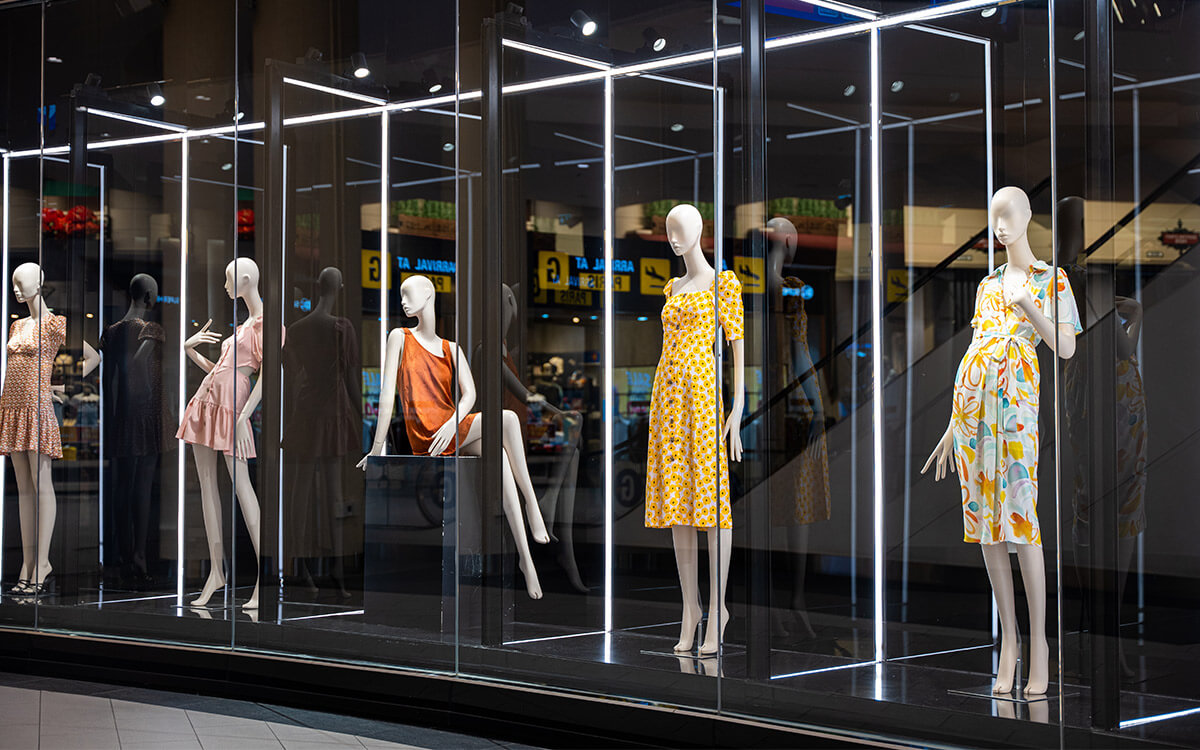Introduction
Visual merchandising has long been a cornerstone of retail innovation. Finding new ways to captivate and keep shoppers interested can make or break the way your business is perceived in the eyes of consumers.
Storytelling is a huge aspect of retaining your consumers, and visual merchandising is a great way to implement the stories your brand wants to tell in order to drive sales and increase influence.
But as the retail landscape evolves, so does the art of displaying products in a way that tells a story, sparks interest, and aligns with customer values. Today, visual merchandising has evolved beyond traditional methods like simple window displays. Today’s consumers are more keen on immersive experiences that combine digital facilities with physical shops.
In 2024, the market is undergoing dynamic changes, largely shaped by the integration of digital technologies, evolving consumer values, and the continued blurring of the online and offline shopping experience.
Exploring the Emerging Visual Merchandising Landscape for 2024
The End of the Online-Offline Shopping War
For years, retailers have been caught between the online shopping convenience and the hands-on experience of physical stores. However, 2024 marks the end of this battle.
Retailers are no longer forced to choose one over the other. Instead, we’re witnessing the the era of the seamless omnichannel content strategy, where online and offline experiences complement rather than compete.
For example, retailers are incorporating digital screens and interactive technologies in physical stores, offering customers a personalised, online-inspired experience. On the other hand, e-commerce platforms are focusing on replicating that in-store feel with immersive features like virtual try-ons, 3D product views, and augmented reality (AR).
This merging of online and offline shopping is shaping how visual merchandising is approached, as retailers must now consider how their displays and layouts can cater to both in-person and digital shoppers.
The Use of Social Media in Visual Merchandising
Social media has grown into a powerful driver of trends, sales, and innovation in the retail industry. In 2024, platforms like Instagram, TikTok, and Pinterest are more influential than ever, turning everyday posts into shoppable moments.
Every campaign is now an opportunity to increase engagement through social media. Companies are increasingly focused on financing interesting and engaging campaigns that add value to the customer’s shopping experience.
Whether through eye-catching window displays, in-store art installations, or pop-up shops, the goal is to make the space as photogenic as possible, encouraging shoppers to share their
experiences online. By blending social media with visual merchandising, retailers can create buzz and expand their reach beyond the physical store.
Aligning with Shopper Values
The modern consumer is more value-driven than ever before. They have grown tired of traditional marketing methods.
In order to capture their attention, brands need to be more aware of the microtrends that undergo dynamic change across platforms. Using that data and crafting an omnichannel marketing strategy can be the ticket to growing your brand’s impact on a global audience.
That’s why visual merchandising in 2024 will put a heavy focus on showcasing the brands’ commitment to values like sustainability, inclusivity and storytelling. Customers can expect to see more eco-friendly materials
used in displays, products presented in ways that highlight sustainable practices, and an overall shift toward transparency in retail spaces.
The storytelling aspect of visual merchandising is crucial here; retailers will need to find effective methods to convey the brand’s ethos through every detail of their presentation styles.
Retailers who align their merchandising strategies with the values of their target audience will find themselves in a stronger position to connect with today’s discerning customers.
The Importance of Personalisation
Personalisation is no longer a luxury—it’s a necessity. As consumers seek more tailored experiences, visual merchandising must follow suit.
In 2024, personalisation in retail will go beyond monogrammed products or bespoke services. Stores will incorporate data-driven insights to customise everything from product displays to in-store layouts based on customer preferences.
Digital touchpoints in physical stores will allow customers to interact with personalised content, while dynamic displays will adjust in real time to reflect individual shopper interests. This level of customisation enhances the shopping experience, offering deeper connections between active brands and their consumers.
Conclusion
The world has undergone a rapid change in terms of how consumers interact with goods and services. People appreciate a value-added approach to shopping, and brands are required to step up to meet that growing demand.
Visual merchandising that blends physical shopping with digital experiences can be the answer to this rising need. Weaving interesting brand stories into your campaigns and providing sustainable and ethical alternatives to a highly conscious can be a great way to boost your brand and retain loyal customers.
Omnichannel strategies are the ways to maximise your impact on all fronts and generate larger sales in the modern market. So don’t miss out on your opportunity to do so. Research, learn, and reach out to your customers to provide value that they can appreciate.
By Deepan P. Eswar
CEO, KBC- VISUALWORKS

